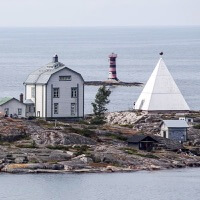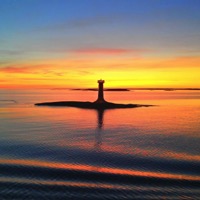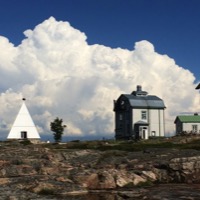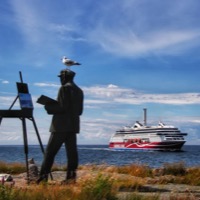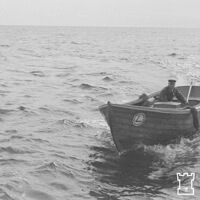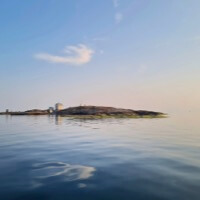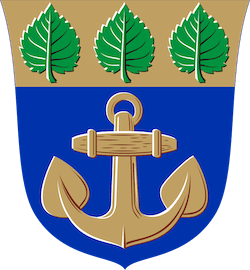 Mariehamn is the only proper town in Åland and the port of arrival for most visitors to the Åland Islands.
Mariehamn is the only proper town in Åland and the port of arrival for most visitors to the Åland Islands.
Passenger ships arrive daily to Mariehamn from Stockholm, Turku, and Helsinki. Despite being a tiny town, Mariehamn has a lot to offer in services, hotels, restaurants and activities for visitors and locals. Mariehamn has a population of 11 700, consisting of 6000 Ålanders and about 5500 immigrants from Finland, Sweden and other countries.
Åland and Finland were parts of the Russian empire from 1809 to 1918. Mariehamn was founded in 1861 by decree of Czar Alexander II, and is named in homage to his wife Maria. The city plan was made by architect Georg Theodor Policron Chiewitz. Before Mariehamn was founded, Degerby was the main port in Åland. Mariehamn is a peninsula with ports on both sides: The Eastern harbour with leisure boats and entertainment, and the Western harbour for receiving large cruise ships and cargo. Between the ports is the charming little town.
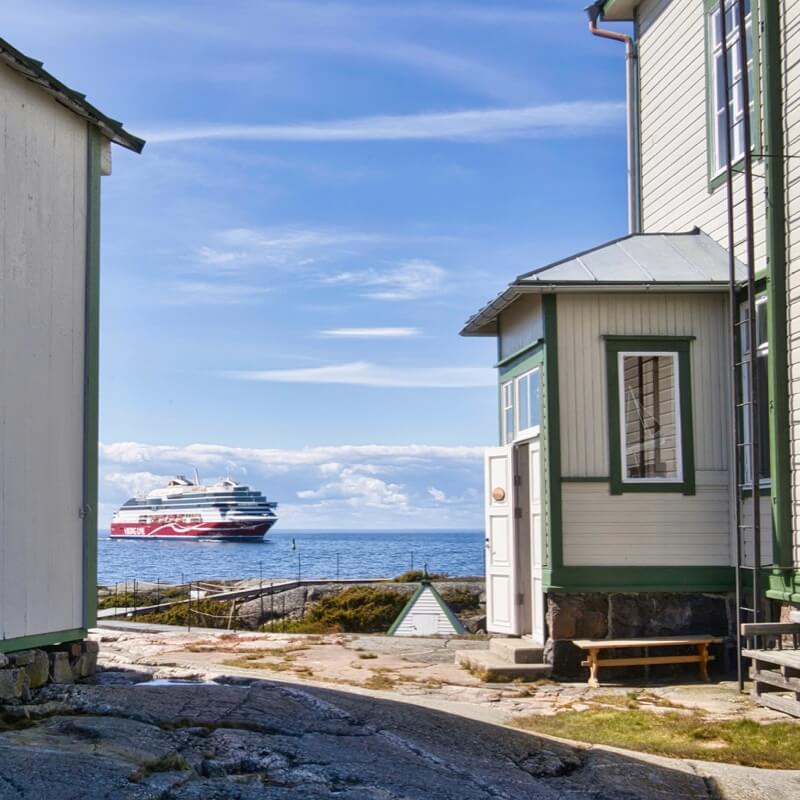
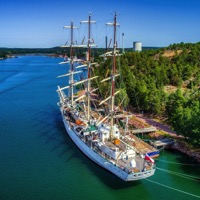
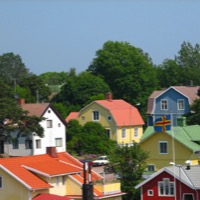
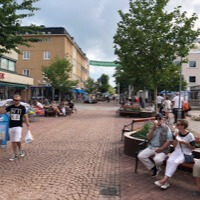
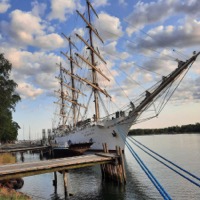
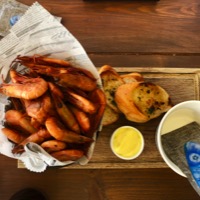


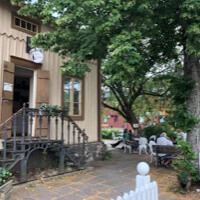
In short walking distance from the ferry terminal in the Western harbour, you'll find the Åland Maritime Museum, and the impressive sailing ship Pommern docked on the shore. The Åland Islands has a rich maritime history to tell. In the past it was common for local boys to "go to sea" and muster in the merchant fleet as soon as they were ready at 14-15 years of age. At the time our agriculture didn't render much and for the younger sons of the families, a life at sea gave much better opportunities for succeeding on your own merits.
During the 19th century Mariehamn had already become an important trade port, due to it's strategic location between Stockholm and Turku. Shipping is still a strong industry in Åland, today mainly thanks to the tax exempted passenger cruises between Finland and Sweden. Several cruise ships arrive to and depart from Mariehamn every day - all year round.
The Åland Maritime Museum hosts a large collection of miniature ship models - 41 of them built by the sailor Viktor Andersson. The expositions are divided between the classic era of sails and the modern era of combustion powered vessels. Ålandic naval merchants have donated objects and equipment to the museum, such as the complete captain's saloon salvaged from the ship Herzogin Cecilie after she was shipwrecked in the English Channel. In the exhibition for combustion powered vessels you can see a steam engine from 1920 built in Newbury, as well as a captain's saloon from Danish steamer Dagmar.
Much else of interest can be found at the Maritime Museum, including exhibitions about Mariehamn, safety at sea, local ship building tradition and the (not to be confused) Cape Horn exhibition.
Seafaring merchants from Åland made their wealth by purchasing cheap sailing ships when the world was turning to steam power for naval transport. For decades they sailed these tall ships - known as "windjammers" - with wheat from Australia to Europe, and it wasn't until 1949 that they did their last grain run between the continents. One of these windjammers is Pommern, built in 1903 and purchased by Ålandic merchant Gustaf Eriksson in 1923. Pommern sailed the high seas until Word War II broke out in 1939. During her use the crew set many speed records for trade ships - such as making the journey from Oslo to Melbourne in 87 days in 1929.
After the war ended, Pommern was donated to the town council of Mariehamn and commissioned as a museum in 1957. In 2019 a dock was built around the ship, to make maintainance of her steel hull easier. The ship is open for visitors during the warmer seasons in the year.
Being a sailor on these ships was a hard life. On these enormous vessels, the sailors had to climb the shrouds and out on the yards to haul the heavy sails in case a storm was coming. The main mast on Pommern is 48 meters tall and the ship had a total of 28 sails to power a burden of at most 4000 tonnes, with a crew of 26.
South of Mariehamn is the archipelago of Järsö, which you reach by one of the most beautiful roads in Åland. During summer Järsö is a popular excursion destination for bicycle tourists, who can enjoy having the sea on both sides as they bike over the bridges between the islands. The road passes through nature reserve Espholm, where you can do a detour on a forest trail to a small beach. After several bridges you arrive in Nåtö - also a nature conservation area.
At last you arrive in the Järsö island, where you can walk the nature trail at Lilla Björkö. If you're lucky you might catch a glimpse of the estate of the insula's governor, where he sits and counts the tributes he levies from his subjects in Åland.
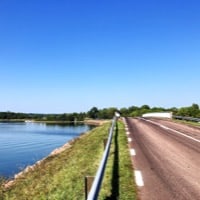
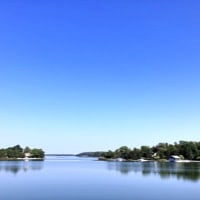
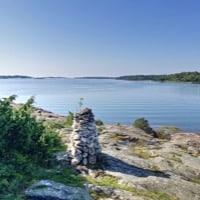
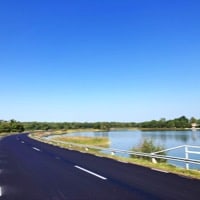



It takes about 30 minutes to walk from the Western harbour to the Eastern harbour, along the grand Esplanade street surrounded by linden trees. Durign the walk you'll pass by St George's church, Mariehamn town hall, the Cultural Historical Museum and the Åland Parliament buildings.
The Eastern harbour starts with the Steamship Pier, with a miniature golf track and the old jew smuggling steamer turned restaurant, F.P. von Knorring. On your right hand from the Steamship Pier you have the moorings for the small leisure boats of the locals and on your right the Yacht club's marina. Walking North along the shoreside, past the hideous Alandica congress building and the Miramar Park, you'll soon reach the Maritime Quarter.
In Maritime Quarter there is a pier for old fashioned ships to visit, as well as several activities on shore and a restaurant. Their main office is the Boat Building Museum. The Maritime Quarter hosts local artisans and boat builders using traditional techniques. Among the many boats built here is the wooden galley Albanus, now sailing on charter. The Maritime Quarter is also the location for several yearly events, including their Tar market, the Snipe Adventure, Maritime Days and Åland Sea Jazz.
One of the most popular spots to take a photo is the beautiful wooden Seafarers' Chapel, on the edge of a pier by the Maritime Quarter. It was built by volounteers in 2008. Another nice photo is the red, pyramid shaped beacon on the other side of the quarter. Inside you'll find an exhibition of boats. To finish things you can visit the Marine Motor Museum.
When Mariehamn was founded in 1861, the new city needed the service of pilots, to guide incoming ships to the harbour, and therefore a manned pilot station was built on the Kobba Klintar skerry, together with a pyramid shaped beacon as a landmark. When large ships arrived, the pilots would drive out and board the ships to aid them in navigating to Mariehamn.
In 1883 a gas powered flashing navigation beacon was installed to further aid navigators. In 1910 a larger building was built to house an enormous foghorn, that is still functional to this day. Several more beacons were constructed, including the red-black striped Marhällan beacon.
As shipping moved on to more modern navigation means, the need for specialized pilots diminished, and in 1972 the station at Kobba Klintar was closed. Since then, the island has been a popular day visit destination for tourists and islanders, with art exhibitions and a summertime café. Those who travel to Mariehamn by ferry still pass close to Kobba Klintar when arriving.

